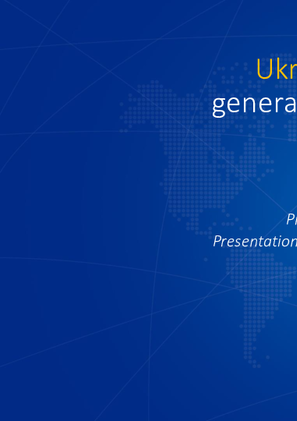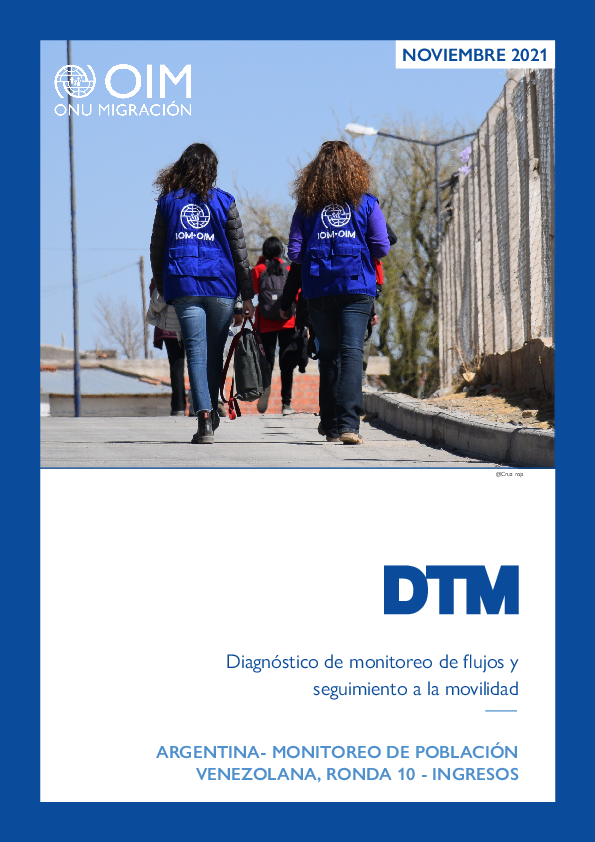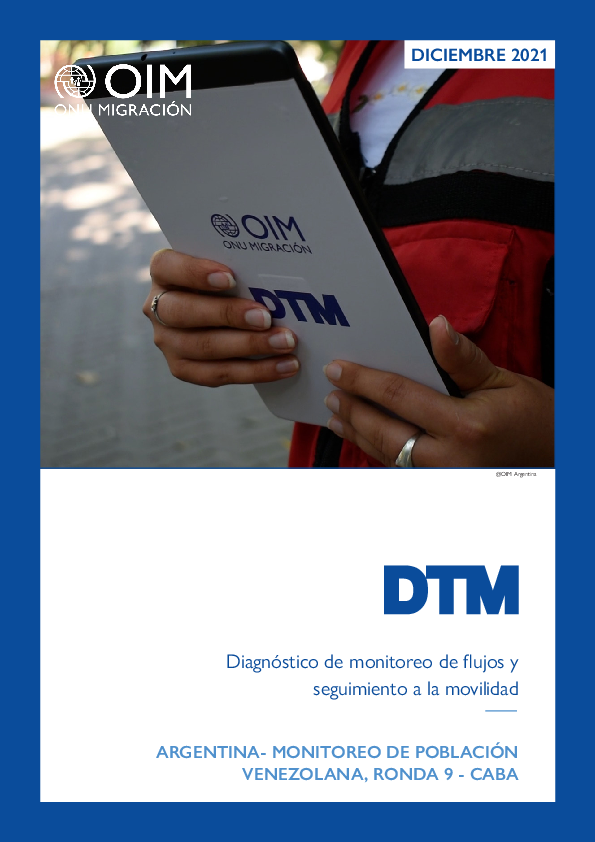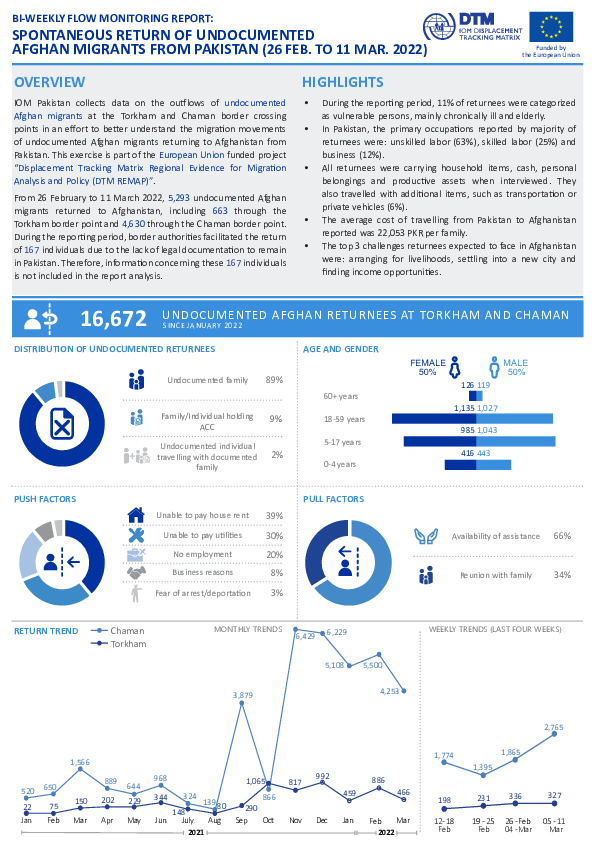-
Countries
-
Data and Analysis
-
Special Focus
-
Crisis Responses
About Republic of Moldova
Located in Eastern Europe, the Republic of Moldova is bordered on the west and southwest by Romania and on the north, south, and east by Ukraine.
Since the start of the war in Ukraine in February 2022, people have been fleeing from Ukraine to neighboring countries, including the Republic of Moldova in high numbers.
While most refugees and TCNs from Ukraine transiting through the Republic of Moldova within a relatively short timeframe, a notable number has remained within Moldovan urban host communities, in Chisinau and other districts. Moreover, significant secondary impacts of increased regional tensions are observed on the economic situation of the country, on migration patterns in and out of the country and on monetary remittances the country receives from the Moldovan diasporas abroad.
-
DTM programme is active since March 2022 with several strands of work: Surveys with refugees and TCNs from Ukraine, on their displacement patterns, intentions, and needs aim to capture their displacement trends and identify their main profiles, immediate humanitarian needs and intentions
-
Surveys with refugees and TCNs crossing back to Ukraine, to monitor the displacement patterns, intentions, and most immediate needs of persons crossing back to Ukraine from Moldova,
-
Flow Monitoring: compilation and analysis of border crossings data received by national authorities, with disaggregation by border and nationality at entry and exit of the country,
-
Other ad-hoc studies and assessments on specific locations and on several topics related to migration in Moldova, internal displacement and returns of Moldovan citizens from abroad
Contact
Current Donors
- German Federal Foreign Office
- United States Department of State: Bureau of Population, Refugees, and Migration
- Council of Europe Development Bank
About Poland
BACKGROUND
The Displacement Tracking Matrix (DTM) in Poland gathers and analyzes data to disseminate critical multi layered information on mobility, vulnerabilities, and needs of Ukranian refugees and Third Country Nationals (TCNs) to enable decision makers and humanitarian actors to provide these populations with better and targeted assistance.
With the start of the war in Ukraine and the large cross border flows, DTM started to collect data at the border areas and the biggest cities of Poland where the largest group of people were arriving in. DTM collects data on entries to Poland and intentions future travel intentions, cross border movements to Ukraine, needs of the affected populations, and also profiling of reception centers/collective shelters to fulfil the information needs in the response that are being voiced by partners.
CORE ACTIVITIES
DTM in Poland currently conducts four different regular assessments which are Site Assessment, Return to Ukraine Survey, Needs Assessment, and Poland Entry and Intentions Survey.
- Site Monitoring: To locate and map sites where the refugees are staying, to identify the current occupancy of the shelters, the maximum capacity, the length of time that the Ukrainians present intend to remain as well as the priority needs of the refugees. These sites include transit points/reception centres and collective shelters.
- Crossings to Ukraine Survey: To collect information on the date when they and/or their families fled Ukraine, where they were living in Poland or Europe, where they are intending to go back to Ukraine, how long they intend to stay in Ukraine, are they crossing the border by themselves or with members of the family and a breakdown of push/pull factors that have affected this movement decision.
- Needs Assessment: To identify the main assistance and services needs of the refugees. This tool also explores Ukrainians’ and TCNs’ demographic profile, journey they took, current situation and location, future intentions, main information channels they use to receive information, their access to work and some other socio-economic opportunities, and indicators on accountability to the affected populations.
- Poland Entry and Intentions Survey: to understand the intentions of those crossing the border from Ukraine to Poland.
About Slovakia
Since 24 February 2022, an increasing number of refugees and third-country nationals (TCNs) have been fleeing from Ukraine to neighboring countries, including Slovakia. As a result, DTM was activated in Slovakia as of March 2022.
DTM in Slovakia gathers and analyses data to disseminate critical multi layered information on mobility, vulnerabilities, and needs of Ukrainian refugees and TCNs to enable decision makers and humanitarian actors to provide these populations with better and targeted assistance.
DTM activities in Slovakia consist of:
-
Surveys with refugees and TCNs from Ukraine, on their displacement patterns, intentions, and needs aim to capture their displacement trends and identify their main profiles, immediate humanitarian needs and intentions,
-
Surveys with refugees and TCNs crossing back to Ukraine, to monitor the displacement patterns, intentions, and most immediate needs of persons crossing back to Ukraine from Slovakia,
-
Flow Monitoring: compilation and analysis of border crossings data received by national authorities, with disaggregation by border and nationality at entry and exit of the country,
-
Site Monitoring: this intends to monitor the accommodation sites for people entering Slovakia from Ukraine, both refugees and TCNs, was designed to monitor available capacity, level of protection and services provided in the sites.
Current Donors
- United States Department of State: Bureau of Population, Refugees, and Migration
- Government of Japan
Population Groups
Survey Methodology
Unit of Analysis Or Observation
Type of Survey or Assessment
Keywords
Geographical Scope
Administrative boundaries with available data
The current dataset covers the following administrative boundaries

Contact
DTMUkraine@iom.int
Language
English
Location
Ukraine
Period Covered
Mar 09 2022
Mar 16 2022
Activity
- Survey
Between 9 and 16 March 2022, IOM, conducted a rapid representative survey of the general population in Ukraine to gather initial insights into internal displacement and mobility flows, and to assess local needs. While Displacement Tracking Matrix tools are being established, this general population survey will serve as a preliminary source to identify areas with high humanitarian needs and to inform the targeting of response aiming to assist the conflict-affected population. The geographical scope of the survey covers all five macro-regions (West, East, North, Center, South, and the city of Kyiv). The probabilistic sample, representative at macro-region level, was constructed through a random‐digit‐dial (RDD) approach, and 2,000 respondents aged 18 and over were interviewed using the computer assisted telephone interviewing (CATI) method. Those currently outside Ukraine were not interviewed. Population estimates assume that children travel together with their adult guardians. The estimates rely on the UNFPA population data for Ukraine, agreed upon as the common population baseline by the humanitarian community.

Contact
iombuenosaires@iom.int
Language
Spanish
Location
Argentina
Period Covered
Dec 10 2021
Jan 12 2022
Activity
- Survey
- Flow Monitoring Survey
En la actualidad se estima que aproximadamente 5.6 millones de personas de nacionalidad venezolana residen fuera de su país, de las cuales 4.6 millones residen en países de América Latina y el Caribe . En la República Argentina, se estima que residen 170.517 personas venezolanas (diciembre, 2021), siendo este flujo poblacional uno de los más dinámicos en años recientes en un país históricamente receptor de inmigración. Los flujos de personas refugiadas y migrantes venezolanas revisten especial interés, dado que presentan necesidades específicas que los distinguen de otros grupos de inmigrantes de la región. Se trata de movimientos a gran escala, sostenidos en el tiempo, que requieren de soluciones políticas y solidaridad internacional. Con el fin de garantizar un enfoque integral y coordinado a nivel regional entre los gobiernos, actores de sociedad civil y la comunidad internacional, surge la Plataforma Regional de Coordinación Interagencial que fue creada en conformidad con la solicitud del Secretario General de las Naciones Unidas al ACNUR y la OIM el 12 de abril de 2018, para dirigir y coordinar la respuesta a los/as refugiados/as y migrantes de Venezuela. En este marco se crea la Plataforma Nacional de Respuesta para Refugiados y Migrantes de Venezuela en la Argentina que actualmente forma parte del capítulo subregional Cono Sur incluido en la Plataforma Regional. A su vez, OIM Argentina es co-líder del Sector de Manejo de Información de la Plataforma Nacional, que se encarga de aunar esfuerzos para brindar asistencia en materia de manejo de información al equipo de coordinación. La Matriz de Seguimiento del Desplazamiento (DTM por sus siglas en inglés), en tanto herramienta utilizada por OIM en situaciones de emergencia, reviste un instrumento fundamental a la hora de proveer información sobre las necesidades de la población venezolana. Desde 2018 se han implementado rondas de Monitoreo de Flujo y de Encuesta en lugares de residencia, con la finalidad de mejorar las acciones destinadas a este grupo. En el informe a continuación se presentan los resultados de la Ronda 11, realizada durante el mes de diciembre de 2021, que tuvo entre sus objetivos caracterizar a la población venezolana que ingresa al país por vías terrestres y brindar información sobre rutas migratorias, características de su viaje, necesidades de asistencia, impacto de la COVID-19 y reunificación familiar. Esta Ronda de la DTM ha sido financiada con fondos del Bureau of Population, Refugees and Migration (PRM), del Gobierno de Estados Unidos de América.
En la DTM Ronda 11 se implementó la metodología de encuestas no probabilísticas, por conveniencia, tomadas de modo presencial en cooperación con Cruz Roja Argentina. De este modo, se alcanzó a una población de 74 personas a partir de 27 encuestas en dos puntos de la frontera norte de la Argentina: La Quiaca, en la provincia de Jujuy, y Puerto Iguazú, en la provincia de Misiones. La población objetivo de este ejercicio fueron las personas migrantes y refugiadas de nacionalidad venezolana y el grupo familiar con el que se encontraban viajando, que ingresaron a la Argentina entre el 10 de diciembre de 2021 y el 12 de enero de 2022.

Contact
iombuenosaires@iom.int
Language
Spanish
Location
Argentina
Period Covered
Nov 07 2021
Dec 07 2021
Activity
- Survey
- Flow Monitoring Survey
En la actualidad se estima que aproximadamente 5.6 millones de personas de nacionalidad venezolana residen fuera de su país, de las cuales 4.6 millones residen en países de América Latina y el Caribe. En la República Argentina, se estima que residen 174.333 personas venezolanas (junio, 2021), siendo este flujo poblacional uno de los más dinámicos en años recientes en un país históricamente receptor de inmigración. Los flujos de personas refugiadas y migrantes venezolanas revisten especial interés, dado que presentan necesidades específicas que los distinguen de otros grupos de inmigrantes de la región. Se trata de movimientos a gran escala, sostenidos en el tiempo, que requieren de soluciones políticas y solidaridad internacional. Con el fin de garantizar un enfoque integral y coordinado a nivel regional entre los gobiernos, actores de sociedad civil y la comunidad internacional, surge la Plataforma Regional de Coordinación Interagencial que fue creada en conformidad con la solicitud del Secretario General de las Naciones Unidas al ACNUR y la OIM el 12 de abril de 2018, para dirigir y coordinar la respuesta a los/as refugiados/as y migrantes de Venezuela. En este marco se crea la Plataforma Nacional de Respuesta para Refugiados y Migrantes de Venezuela en la República Argentina que actualmente forma parte del capítulo subregional Cono Sur incluido en la Plataforma Regional. A su vez, OIM Argentina es co-líder del Sector de Manejo de Información de la Plataforma Nacional, que se encarga de aunar esfuerzos para brindar asistencia en materia de manejo de información al equipo de coordinación. La Matriz de Seguimiento del Desplazamiento (DTM por sus siglas en inglés), en tanto herramienta utilizada por OIM en situaciones de emergencia, reviste un instrumento fundamental a la hora de proveer información sobre las necesidades de la población venezolana. Desde 2018 se han implementado rondas de Monitoreo de Flujo y de Encuesta en lugares de residencia, con la finalidad de mejorar las acciones destinadas a este grupo. En el informe a continuación se presentan los resultados de la Ronda 10, realizada durante el mes de noviembre de 2021, que tuvo entre sus objetivos caracterizar a la población venezolana que ingresa al país por vías terrestres y brindar información sobre rutas migratorias, características de su viaje, necesidades de asistencia, impacto de la COVID-19 y reunificación familiar. Esta Ronda de la DTM ha sido financiada con fondos del Bureau of Population, Refugees and Migration (PRM), del Gobierno de Estados Unidos de América.
En la DTM Ronda 10 se implementó la metodología de encuestas no probabilísticas, por conveniencia, tomadas de modo presencial en cooperación con Cruz Roja Argentina. De este modo, se alcanzó a una población de 126 personas a partir de 58 encuestas en dos puntos de la frontera norte de Argentina: La Quiaca, en la provincia de Jujuy, y Puerto Iguazú, en la provincia de Misiones. La población objetivo de este ejercicio fueron las personas migrantes y refugiadas de nacionalidad venezolana y el grupo familiar con el que se encontraban viajando, que ingresaron a la Argentina entre el 7 de noviembre y el 7 de diciembre de 2021.

Contact
iombuenosaires@iom.int
Language
Spanish
Location
Argentina
Period Covered
Nov 27 2021
Jan 07 2022
Activity
- Survey
- Flow Monitoring Survey
En la actualidad se estima que aproximadamente 6 millones de personas de nacionalidad venezolana residen fuera de su país, de las cuales 4.9 millones residen en países de América Latina y el Caribe . En la República Argentina, se estima que residen 170.517 personas venezolanas (diciembre, 2021), siendo este flujo poblacional uno de los más dinámicos en años recientes en un país históricamente receptor de inmigración. Los flujos de personas refugiadas y migrantes venezolanas revisten especial interés, dado que presentan necesidades específicas que los distinguen de otros grupos de inmigrantes de la región. Se trata de movimientos a gran escala, sostenidos en el tiempo, que requieren de soluciones políticas y solidaridad internacional. Con el fin de garantizar un enfoque integral y coordinado a nivel regional entre los gobiernos, actores de sociedad civil y la comunidad internacional, surge la Plataforma Regional de Coordinación Interagencial que fue creada en conformidad con la solicitud del Secretario General de las Naciones Unidas al ACNUR y la OIM el 12 de abril de 2018, para dirigir y coordinar la respuesta a los/as refugiados/as y migrantes de Venezuela. En este marco se crea la Plataforma Nacional de Respuesta para Refugiados y Migrantes de Venezuela en la República Argentina que actualmente forma parte del capítulo subregional Cono Sur incluido en la Plataforma Regional. A su vez, OIM Argentina es co-líder del Sector de Manejo de Información de la Plataforma Nacional, que se encarga de aunar esfuerzos para brindar asistencia en materia de manejo de información al equipo de coordinación. La Matriz de Seguimiento del Desplazamiento (DTM por sus siglas en inglés), en tanto herramienta utilizada por OIM en situaciones de emergencia, reviste un instrumento fundamental a la hora de proveer información sobre las necesidades de la población venezolana. Desde 2018 se han implementado rondas de Monitoreo de Flujo y de Encuesta en lugares de residencia, con la finalidad de mejorar las acciones destinadas a este grupo. En el informe a continuación se presentan los resultados de la Ronda 9, que tuvo entre sus objetivos caracterizar a la población venezolana que reside en la Ciudad Autónoma de Buenos Aires y brindar información sobre rutas migratorias, características de su viaje, necesidades de asistencia, situación laboral, de salud y sobre el impacto de la COVID-19. Esta Ronda de la DTM ha sido financiada con fondos del Bureau of Population, Refugees and Migration (PRM), del Gobierno de Estados Unidos de América.

Contact
DTM Nigeria, AllUsersInDTMNigeria@iom.int
Language
English
Location
Nigeria
Period Covered
Mar 07 2022
Mar 13 2022
Activity
- Event Tracking
- Mobility Tracking
The DTM Emergency Tool (ETT) is deployed to track and to collect information on large and sudden population movements, provide frequent updates on the scale of displacement and quantify the affected population when needed. As a sub-component of the Mobility Tracking methodology in Nigeria. ETT utilises direct observation and a broad network of key informants to capture best estimates of the affected population per location, enabling targeted humanitarian response planning.
Between 07 and 13 March 2022, a total of 3,564 movements were recorded in Adamawa and Borno States. The recorded movements consisted of 3,247 arrivals and 317 departures. Arrivals were recorded at locations in Askira/Uba, Bama, Biu, Damboa, Gwoza, Hawul, Kala/Balge, Monguno and Ngala Local Government Areas (LGAs) of the most conflict-affected Borno State and in Fufore, Girei, Gombi, Hong, Lamurde, Maiha, Michika, Mubi North, Mubi South, Song, Yola North and Yola South LGAs of Adamawa State.
Departures were recorded in Askira/Uba and Damboa LGAs of Borno State and in Fufore, Gombi, Hong, Lamurde, Maiha, Mubi North, Mubi South, Song, Yola North and Yola South LGAs of Adamawa State. ETT assessments identified the following movement triggers: voluntary relocation (1,279 individuals or 36%), conflicts/attacks (966 individuals or 27%), poor living conditions (598 individuals or 17%), improved security (355 individuals or 10%), military operations (326 individuals or 9%) and fear of attacks (40 individuals or 1%).

Contact
DTM Pakistan, iomisbdtmremapteam@iom.int
Language
English
Location
Pakistan
Period Covered
Feb 26 2022
Mar 11 2022
Activity
- Flow Monitoring
IOM Pakistan collects data on the outflows of undocumented Afghan migrants at the Torkham and Chaman border crossing points in an effort to better understand the migration movements of undocumented Afghan migrants returning to Afghanistan from Pakistan. This exercise is part of the European Union funded project “Displacement Tracking Matrix Regional Evidence for Migration Analysis and Policy (DTM REMAP)”. From 26 February to 11 March 2022, 5,293 undocumented Afghan migrants returned to Afghanistan, including 663 through the Torkham border point and 4,630 through the Chaman border point. During the reporting period, border authorities facilitated the return of 167 individuals due to the lack of legal documentation to remain in Pakistan. Therefore, information concerning these 167 individuals is not included in the report analysis.
